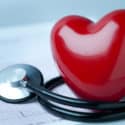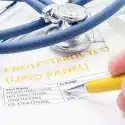
It burns, and it’s painful, but what is it? Your friends at MainStreet Family Care are breaking down the differences between acid reflux and heartburn and sharing what you need to know to feel better fast and prevent long-term damage!
While acid reflux and heartburn are frequently used interchangeably, they are different.
Acid reflux is a gastrointestinal medical condition; heartburn is one symptom of acid reflux. Knowing the heartburn and acid reflux differences, risk factors, and treatments could help you prevent a more serious medical condition called gastroesophageal reflux disease (GERD).
Acid Reflux
As we just mentioned, acid reflux is a medical condition, also known as gastroesophageal reflux or GER. Most people experience GER at least a few times over their lifetime.
Acid reflux occurs when stomach contents backflow into the esophagus. Your lower esophageal sphincter (LES) is a ring of muscle at the bottom of your esophagus where it meets your stomach. Ideally, your LES acts as a one-way valve, allowing food from your esophagus to enter your stomach but preventing food and stomach acid from backing up into your esophagus.
When stomach acid backflows into your esophagus, it can be painful and irritating to the tissues lining your esophagus. You don’t have to have heartburn to have acid reflux. Other common symptoms of acid reflux include:
- Asthma symptoms such as a chronic cough, shortness of breath, and wheezing. The nerves in the esophagus and lungs are connected and may trigger these asthma symptoms, most notably after eating.
- Backwash or “wet burps” may occur, leaving you with a sour taste in your mouth or at the back of your throat.
- Hoarseness or a raspy voice can be caused by stomach acid irritating your vocal cords.
- Indigestion can present as bloating, burping, and fullness or pain in the upper part of your abdomen.
- Nausea or vomiting may occur because acid reflux causes a delay in your stomach emptying.
- Sore throat may develop from the acid irritation in your throat.
If you experience acid reflux more than twice a week, you could have a chronic condition called GERD, which affects about 20 percent of adults and 10 percent of children in the United States.
You should see a healthcare provider if you think you have GERD. Early treatment can help prevent long-term complications of GERD, including asthma, Barrett’s esophagus, esophageal cancer, esophageal stricture, esophagitis, and laryngopharyngeal reflux.
Concerned you may have GERD? MainStreet primary care services can help! Login to schedule an appointment.
Heartburn
Heartburn is a common symptom of acid reflux and GERD. In fact, more than 60 million people in the United States experience heartburn at least once a month. But it can be a scary symptom the first time you feel it!
Heartburn causes an intense burning sensation in the middle of your chest. It occurs when acid burns the sensitive tissue in your esophagus. The burning may extend from your chest to your neck or throat. Heartburn is usually felt after eating and can worsen if you bend over or lie down.
The chest pain and burning caused by heartburn are often confused with a heart attack. And there’s a good reason for that! Although heartburn does not damage your heart, pain in your esophagus stimulates the same nerves that heart pain stimulates.
If you have new chest pain or if it occurs with dizziness, pain radiating to your arm or jaw, shortness of breath, or sweating, call 911 immediately.
Causes of Acid Reflux and Heartburn
Stomach acid backflowing into the esophagus causes acid reflux. Acid reflux causes the heartburn symptom. But what causes the stomach acid to backflow into the esophagus in the first place?
Anything that causes your LES to relax and fail as a one-way valve from your esophagus to your stomach is a risk factor for acid reflux and heartburn. The most common causes include:
- Eating certain foods such as chocolate, garlic, and spicy foods
- Eating large meals
- Eating late and lying down soon after eating
- Hiatal hernia
- Medications such as antidepressants, hormone supplements, and sedatives
- Obesity
- Pregnancy
- Smoking
Treating Acid Reflux and Heartburn
The first step to treating acid reflux and heartburn is to reduce your risk factors. Some helpful tips include:
- Avoid or reduce your trigger foods.
- Eat smaller meals.
- Eat your last meal of the day earlier to avoid lying down with a full stomach.
- Lose weight if you are overweight and maintain a healthy weight.
- Sleep on your left side.
- Stop smoking.
- Talk to your healthcare provider about your current medications that may trigger acid reflux or heartburn. Never stop taking a prescribed medication without talking with your provider first.
- Try an over-the-counter medication and antacids such as Tums® or Rolaids®.
If you are not getting relief from acid reflux and heartburn by reducing your risk factors or must take an antacid twice a week or more, it’s time to see a healthcare provider. You may need a prescription medication to relieve your symptoms and prevent gastrointestinal damage.
Histamine receptor antagonists, or H2 blockers, are often prescribed for acid reflux and GERD. They work by reducing the amount of acid produced in your stomach.
Proton pump inhibitors, or PPIs, also block stomach acid production at the cellular level. If your GERD is severe, your provider may start with a PPI because it is more effective at reducing stomach acid production than H2 blockers.
Baclofen may be added to an H2 blocker or a PPI to help reduce symptoms of heartburn, indigestion, and nausea by stimulating contractions in your digestive tract and keeping the food moving forward.
Turn to MainStreet Family Care
Feeling that horrible heartburn twice a week or more? MainStreet primary care services can help!
Schedule an appointment today through your patient portal. We’re open seven days a week with extended hours and have multiple locations for your convenience. We can often schedule same-day or next-day appointments!






